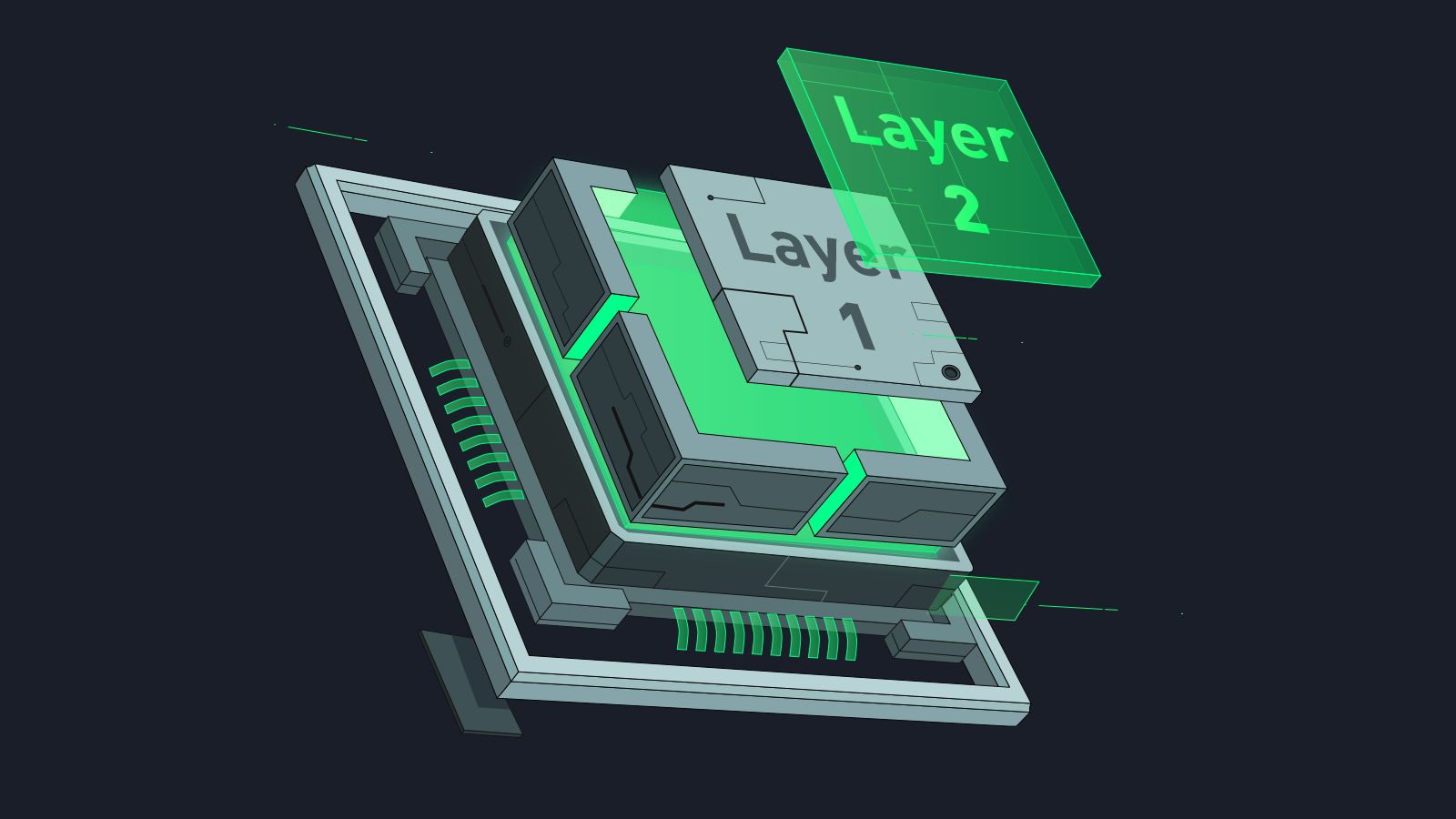Last Updated:
Aug 21, 2025
What are layer-1 and layer-2 solutions: architecture of the blockchain future
Last Updated:
Aug 21, 2025

Author
Share this article
Ethereum, Arbitrum, zkSync and others — why they matter and where we’re heading
The blockchain world has evolved far beyond simple crypto transfers. Today, it powers everything from DeFi and NFT marketplaces to games and DAOs. But as adoption grows, so do network limitations — rising fees, slow confirmations, and congestion. Ethereum, for example, often becomes unusable during peak demand.
To solve these issues, blockchain development has shifted toward layer-1 and layer-2 scaling solutions. Let’s explore what they are, how they differ, and why they’re important for the future of web3.
Layer-1: the base blockchain
Layer-1 refers to the foundational blockchain itself — like Ethereum, Bitcoin or Solana. It handles transaction validation, consensus, block production, and smart contract execution.
Each layer-1 blockchain tries to balance three elements:
● Security
● Decentralization
● Scalability
This is often called the blockchain trilemma. Solving it is hard — most networks choose to prioritize two aspects over the third. Ethereum, for example, emphasizes decentralization and security, which limits its scalability and leads to high gas fees.
Layer-2: scaling on top of the base layer
Layer-2 solutions are built on top of layer-1 blockchains to boost performance without changing the base protocol. They process most activity off-chain and then submit summaries back to layer-1 for settlement.
There are several types of layer-2 solutions:
● Rollups (optimistic and zero-knowledge)
These systems help reduce network load, speed up transactions, and cut fees — while still relying on the security of the base layer.
Optimistic rollups vs zero-knowledge rollups
Optimistic rollups, like Arbitrum and Optimism, assume all transactions are valid unless someone proves otherwise. If needed, a fraud proof can be submitted to dispute invalid transactions.
● Pros: easier to build, compatible with Ethereum’s ecosystem
● Cons: delayed finality, relies on challenge periods
Zero-knowledge rollups (zk-rollups), like zkSync and Starknet, use cryptographic proofs to verify transaction validity. Only a compact proof is sent to layer-1, which saves space and increases speed.
● Pros: faster finality, greater efficiency, better privacy
● Cons: technically complex, harder to integrate
Notable layer-2 projects
● Arbitrum — one of the most used rollups, with strong DeFi presence
● Optimism — fast-growing and focused on shared infrastructure (Superchain)
● zkSync — zk-rollup with smart contract support and low fees
● Polygon — started as a sidechain, now investing heavily in zk-based solutions
Why layer-2 is essential
Layer-2 is not just a performance upgrade — it's vital for blockchain mass adoption:
● It lowers transaction costs significantly
● Enables faster processing for real-world apps
● Supports use cases like gaming, micro-payments and social networks
● Makes decentralized apps accessible to more people
Without scaling, even the best blockchain can't serve millions of users effectively.
Trends and predictions
● DeFi protocols are shifting to layer-2 for better user experience
● Rollups are becoming the preferred scaling method
● zk-rollups are gaining attention as technology matures
● Wallets and apps are adding layer-2 support by default
● Institutions are exploring scalable blockchains for real-world use
Prediction: most crypto users will interact with layer-2 solutions, while only critical data will settle on layer-1 networks.
Conclusion
Understanding how layer-1 and layer-2 work is no longer optional — it's key to navigating the future of crypto. Scalable and efficient blockchain architecture will define the next generation of decentralized apps. Whether you're a builder, investor or curious user, knowing how these systems fit together will help you make smarter decisions in web3.
Author
Share this article
